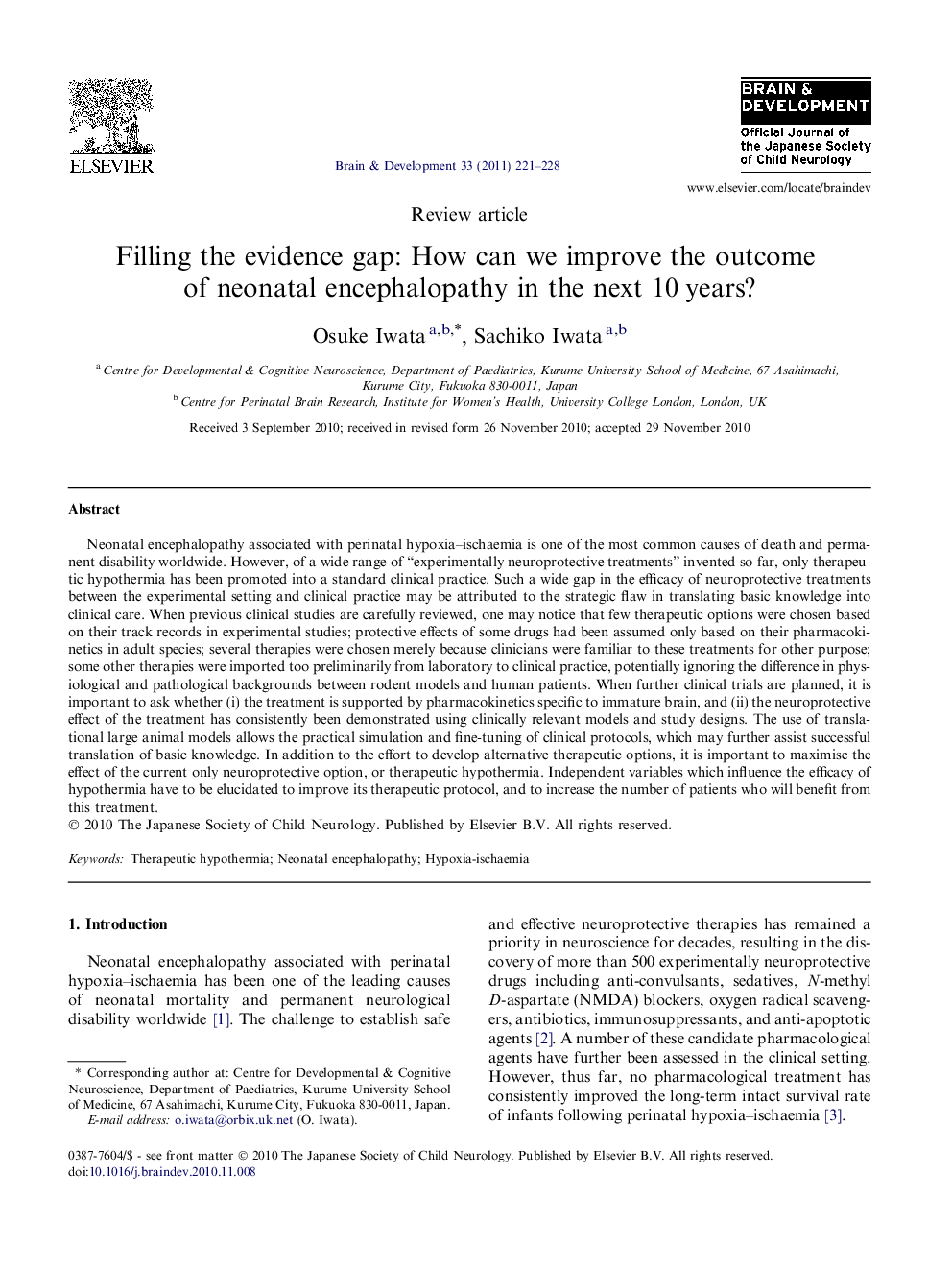| Article ID | Journal | Published Year | Pages | File Type |
|---|---|---|---|---|
| 3037559 | Brain and Development | 2011 | 8 Pages |
Neonatal encephalopathy associated with perinatal hypoxia–ischaemia is one of the most common causes of death and permanent disability worldwide. However, of a wide range of “experimentally neuroprotective treatments” invented so far, only therapeutic hypothermia has been promoted into a standard clinical practice. Such a wide gap in the efficacy of neuroprotective treatments between the experimental setting and clinical practice may be attributed to the strategic flaw in translating basic knowledge into clinical care. When previous clinical studies are carefully reviewed, one may notice that few therapeutic options were chosen based on their track records in experimental studies; protective effects of some drugs had been assumed only based on their pharmacokinetics in adult species; several therapies were chosen merely because clinicians were familiar to these treatments for other purpose; some other therapies were imported too preliminarily from laboratory to clinical practice, potentially ignoring the difference in physiological and pathological backgrounds between rodent models and human patients. When further clinical trials are planned, it is important to ask whether (i) the treatment is supported by pharmacokinetics specific to immature brain, and (ii) the neuroprotective effect of the treatment has consistently been demonstrated using clinically relevant models and study designs. The use of translational large animal models allows the practical simulation and fine-tuning of clinical protocols, which may further assist successful translation of basic knowledge. In addition to the effort to develop alternative therapeutic options, it is important to maximise the effect of the current only neuroprotective option, or therapeutic hypothermia. Independent variables which influence the efficacy of hypothermia have to be elucidated to improve its therapeutic protocol, and to increase the number of patients who will benefit from this treatment.
